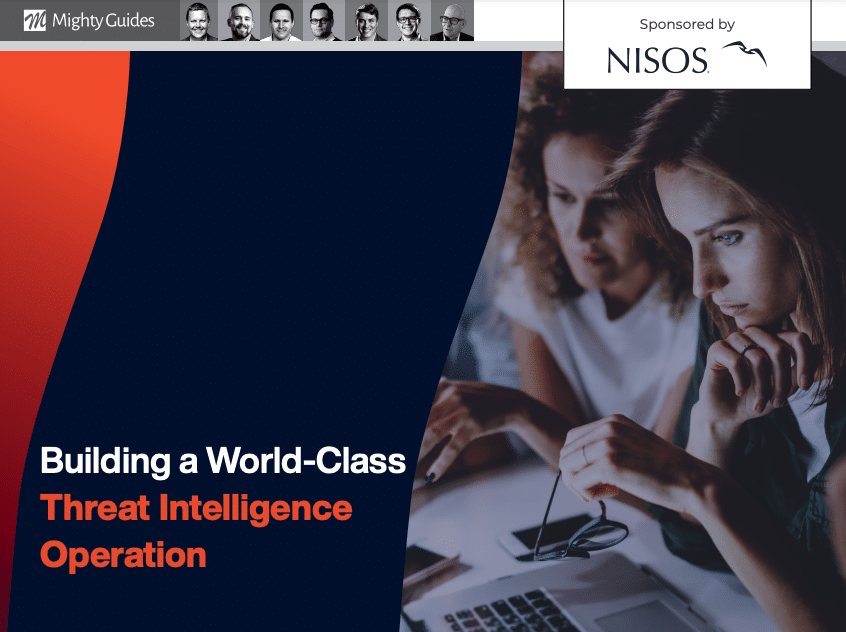The book includes insights from the following experts:
-
Thom VanHorn, VP of Marketing, Nisos
-
David Etue, CEO, Nisos
-
Robert Raines, VP of Engineering, Nisos
-
Justin Zeefe, President and Co-Founder, Nisos
-
Julian Matossian, VP of Product Management, Nisos
-
Landon Winkelvoss, Co-Founder, Nisos
-
Johnny Calhoun, Chief Operating Officer, Nisos
Building a World-Class Threat Intelligence Operation was generously sponsored by Nisos.
Years ago, before the advent of smartphones and social media, threat management was relatively simple. Organizations had well-defined security perimeters that could be tightly controlled. Cybercrime was relatively nascent.
In the modern era, the perimeter has effectively dissolved. Cybercriminals are increasingly sophisticated and endless in number, with state sponsored threat actors and large illegal organizations among their ranks. In this climate, threat intelligence has never been more important.
Organizations now face an ever-evolving ecosystem of targeted threats that challenge their safety, security, and in some cases the viability of their business. The traditional threat intelligence approach of providing voluminous “data lakes” of generalized threat information is not effective in this environment.
Modern threat intelligence requires organization-specific insights. A clear understanding of which threats are active and most relevant to your unique landscape is essential to identifying and responding to material risks. This approach requires a new threat model—one which actively collects and analyzes threat intelligence across the entire ecosystem and results in the following:
– More relevant data
– Actionable threat insights
– More effective remediation efforts
– Maximized utilization of security and intelligence resources
– Empowered security and intelligence personnel
This eBook explores how the threat landscape has evolved and why this necessitates a new approach to threat intelligence. With an emphasis on the value of timely, relevant, actionable, and organization-specific insights, it explains the processes, technology, and skills required to keep pace.
Finally, it examines how the threat intelligence market has transitioned from collecting and distributing broad data sets to an emerging, analyst-led managed intelligence approach that exists as an alternative to, and resource for, in-house teams.



